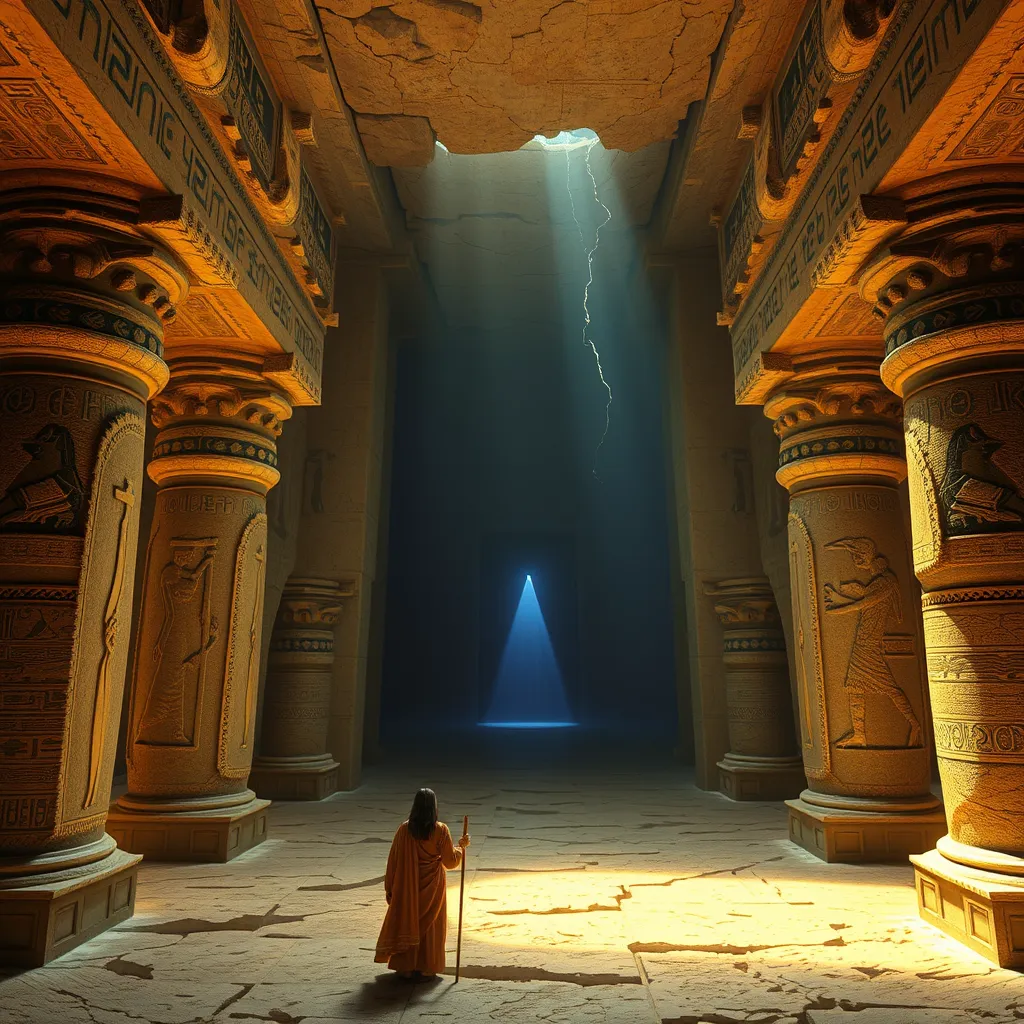The Duat: A Journey Through the Underworld
I. Introduction to the Duat
The Duat, often referred to as the Egyptian Underworld, holds an essential place in ancient Egyptian mythology. It is not merely a destination for souls after death; it is a complex and intricate realm, reflecting the beliefs and values of ancient Egyptian culture.
In this mystical space, souls journey through various landscapes, face numerous challenges, and ultimately seek judgment. The Duat signifies the transition from life to the afterlife, encapsulating the Egyptians’ understanding of existence beyond death.
II. The Mythological Foundations of the Duat
The concept of the Duat is rooted in ancient Egyptian texts and beliefs, particularly the Pyramid Texts and the Book of the Dead. These writings offer insights into the perceptions of the afterlife, detailing how the Duat serves as a realm where the deceased encounter gods, spirits, and other challenges.
Key deities associated with the Duat include:
- Osiris: The god of the afterlife and resurrection, Osiris presides over the Duat and is essential to the journey of the soul.
- Anubis: The god of mummification and the protector of graves, Anubis guides souls through the Duat and oversees the weighing of the heart.
- Ra: The sun god, whose nightly journey through the Duat symbolizes the cycle of life, death, and rebirth.
III. Geography of the Duat
The Duat is depicted as a vast and varied landscape, consisting of numerous realms and environments. These include dark caverns, fiery lakes, and lush fields, symbolizing the trials and transformations a soul must undergo.
One of the most significant aspects of the Duat is its Seven Gates. Each gate represents a phase that the soul must pass through to reach the final judgment. The gates are guarded by various deities and creatures, each presenting unique challenges that test the worthiness of the deceased.
IV. The Journey of the Soul
The journey through the Duat begins with the process of death. As the soul departs from the body, it embarks on a perilous journey filled with trials and tribulations. The soul must navigate through the dark landscapes, confronting various obstacles, including hostile spirits and monstrous beings.
The stages of this journey include:
- Departure from the body: The soul separates from its earthly form.
- Confrontation with guardians and deities: The soul encounters various entities that challenge its passage.
- Traversal through the landscapes of the Duat: The soul journeys through the different realms, facing fears and trials.
V. Judgment and the Weighing of the Heart
At the end of the journey, the soul reaches the Hall of Ma’at, where the Weighing of the Heart ceremony takes place. In this crucial moment, the heart of the deceased is weighed against the feather of Ma’at, the goddess of truth and justice.
The significance of Ma’at in determining the soul’s fate cannot be overstated. If the heart is lighter than or equal to the feather, the soul is deemed pure and worthy of entering the afterlife. If it is heavier, the soul faces dire consequences, often depicted as being devoured by Ammit, the fearsome creature that embodies the sins of the unworthy.
VI. Symbolism and Art in the Duat
The Duat has been a rich source of inspiration for ancient Egyptian art and literature. Artistic depictions often illustrate the soul’s journey and the various challenges faced within the underworld.
Common symbols found within the context of the Duat include:
- The Ankh: Symbol of life and immortality, often associated with the afterlife.
- Lotus Flower: Represents rebirth and purity, frequently depicted in connection with Osiris.
- Scarab Beetle: Symbolizes transformation and renewal, reflecting the cycle of life and death.
These symbols serve to convey deeper meanings about the afterlife and the journey of the soul, reinforcing the beliefs of ancient Egyptians regarding life beyond death.
VII. The Duat in Modern Context
The Duat continues to influence contemporary interpretations of the afterlife, resonating with modern spiritual beliefs and practices. The imagery and concepts associated with the Duat have permeated various aspects of culture, from literature to movies.
In popular culture, the Duat is often referenced in:
- Literature, where authors draw upon ancient Egyptian themes to explore the nature of existence and the afterlife.
- Films, such as those depicting ancient Egypt, showcasing the mythology surrounding the Duat and its deities.
- Video games, where the Duat is sometimes depicted as a realm that players must navigate, facing challenges reminiscent of the ancient journey.
These modern interpretations highlight the enduring fascination with ancient Egyptian beliefs and their relevance in understanding human experiences of life, death, and the unknown.
VIII. Conclusion
The journey through the Duat encapsulates the ancient Egyptian beliefs about the afterlife and the significance of moral integrity in one’s life. It serves as a reminder of the cultural importance placed upon the afterlife and the complexities of human existence.
Reflecting on the Duat and its myths allows us to appreciate the rich tapestry of ancient Egyptian culture and its enduring legacy—a legacy that continues to inspire and intrigue people around the world today.




